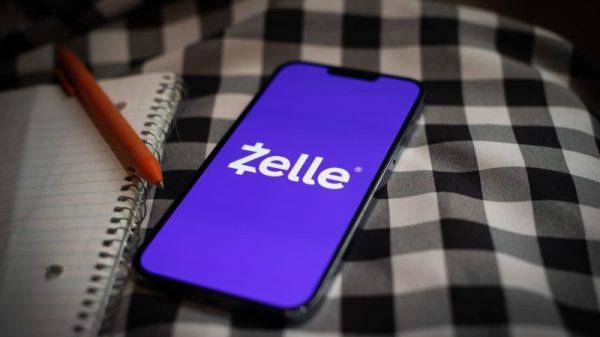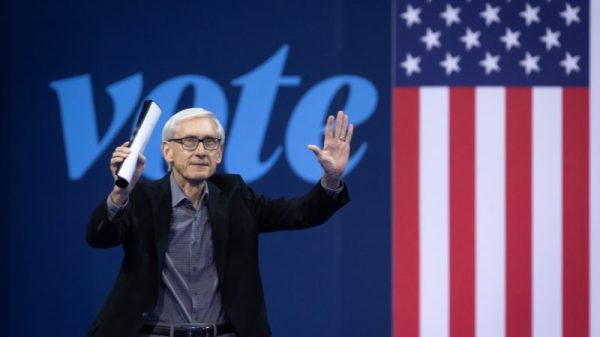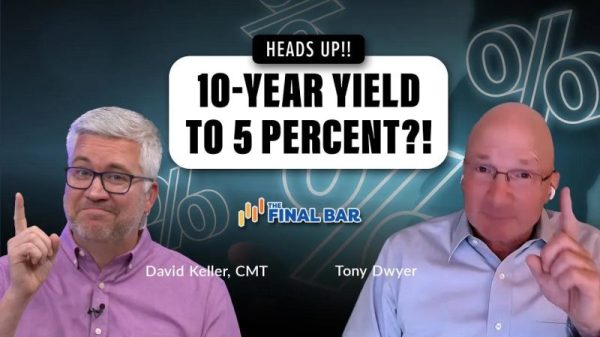In the final days of the 2016 election, there was a tiny little eruption of lunacy that’s mostly been forgotten. It was overwhelmed immediately by Donald Trump’s unexpected victory and, in the annals of bizarre political allegations, soon subsumed by Pizzagate and QAnon.
It centered on something called a “spirit dinner.” Tony Podesta, an art collector whose brother John was at the time running Hillary Clinton’s presidential campaign, received an invitation from artist Marina Abramovic to a meal carrying that evocative name. Tony passed the invite to John Podesta, who neither replied nor attended.
We know this because John Podesta’s email inbox was raided by Russian hackers that year. Thousands of messages he’d sent and received were given to WikiLeaks and made public, including the “spirit dinner” invitation. Conspiracy theorist Alex Jones’s team, no doubt poring over the cache for anything that could be converted into something bizarre and/or damaging for Clinton, seized on it, presenting it as some sort of occult ceremony involving the consumption of blood. The Drudge Report picked it up, as did Fox News host Sean Hannity.
It was all nonsense — particularly the attempt to loop in John Podesta, who didn’t go. But it was revelatory as an extreme endpoint in a new pattern in American politics: mining large amounts of information to pick out anything that is or can be construed as damaging to your political opponents. Even if it’s ridiculous or immediately debunked, the damage can last.
This brings us to the release of footage filmed by Capitol security cameras on Jan. 6, 2021.
On Friday, House Speaker Mike Johnson (R-La.) announced that he would make public thousands of hours of video captured on the day of the riot. That began immediately, with the release of a number of video files that the public could peruse.
The path to this moment is a good demonstration of the reward mechanisms in place on the political right.
Immediately after the riot, federal law enforcement began arresting people who participated. In short order, legal proceedings began, including the government sharing its evidence with defendants’ attorneys and criminal trials. This immediately presented a problem for the U.S. Capitol Police to protect awareness of camera positions in the building, information that it argued could make it easier to carry out a future attack. So the government attempted to limit the availability of footage.
“Our concern is that providing unfettered access to hours of extremely sensitive information to defendants who have already shown a desire to interfere with the democratic process,” government attorneys wrote in response to a media request for the release of video shown at trials, “will result in the layout, vulnerabilities and security weaknesses of the U.S. Capitol being collected, exposed and passed on to those who might wish to attack the Capitol again.”
That was in May 2021 — by which point there was already a robust effort underway to recast the investigation into the riot as a partisan attack by the new president against the political right. That began the night of the riot, really, with right-wing actors and media voices (including on Fox News) alleging that the riot involved anti-Trump actors such as antifa. The government’s opposition to releasing the footage, then, became a way to suggest that it was hiding something — that it was scared not of the Capitol being attacked but of its “narrative” being attacked. Fringe-right defenders of the rioters swooped in, from writer Julie Kelly to Rep. Paul A. Gosar (R-Ariz.). The argument: Release all the video — or else we know you’re hiding something!
It’s really a nifty bit of rhetoric, one that we’ve seen in other iterations in other places (including in the effort to impeach President Biden). The conspiracy is real and the evidence to prove that it is real exists, but the government is hiding it to protect their own skins. The simpler explanation — that rioters attacked the Capitol because they wanted to help Trump retain power — is set aside; culpability is shifted from Trump supporters to the “deep state.”
By the middle of 2021, Fox News host Tucker Carlson had supercharged this line of rhetoric, boosting unfounded and eventually debunked claims that the government had played a role in fomenting the violence. He began hyping the idea that the video would be exculpatory, presumably because he recognized that it helped fan the flames of his anti-government, anti-establishment rhetoric.
This pressure from the grass roots of the right (seeds planted and watered by the right-wing media) led to more of an embrace from Republican legislators. Rep. Kevin McCarthy (R-Calif.) pledged to release footage as part of his consistent and ultimately futile efforts to appeal to his party’s fringe. He made it available to Carlson, for example, who proceeded to find very little of interest and nothing of real significance.
That’s not surprising. Those interested in arguing that the government is sitting on proof that someone other than Trump supporters was responsible for the riot like to tout the “40,000 hours of footage” recorded that day. Well, sure. If you have a lot of cameras rolling for a lot of hours, it adds up. That the vast majority of those hours show empty hallways is generally ignored.
At least until this point. Now Johnson is making it available, meaning that we’re likely to see presentations of serene-seeming footage captured on Capitol Hill offered as proof that the scale of the riot was overstated, as though a hallway without a rioter is somehow a counterpoint to a hallway filled with them. It’s like a bank robber presenting at trial footage from all the banks he didn’t stick up in an effort to suggest that the charges against him are exaggerated.
What has immediately followed the released of the footage, though, is misinformation — snippets of footage taken out of context and misinterpreted or misrepresented to suggest that government actors had a role in the riot or that the day was otherwise not as it seemed.
Here is Sen. Mike Lee (R-Utah), for example, elevating a claim that someone coming into the Capitol was shown “flashing a badge” which would “prove” that there were undercover agents “disguised as MAGA” at the Capitol that day.
I can’t wait to ask FBI Director Christopher Wray about this at our next oversight hearing.
I predict that, as always, his answers will be 97% information-free. https://t.co/m3rRE4Byfu
— Mike Lee (@BasedMikeLee) November 19, 2023
But this was not a federal law enforcement officer. As NBC News’s Ryan Reilly pointed out, the man shown was Kevin Lyons, charged with disorderly conduct and sentenced to multiple years in prison. What he’s holding up was not a badge but a vape.
The senator, though, shared the unverified allegation with his followers. The post has been viewed 1.6 million times according to internal metrics from X, formerly Twitter.
In another exchange, Lee mocked former Wyoming congresswoman Liz Cheney (R) who shared a snippet of rioters attacking police, adding the caption, “Here’s some January 6th video for you.”
“Liz, we’ve seen footage like that a million times. You made sure we saw that — and nothing else,” Lee replied. “It’s the other stuff — what you deliberately hid from us — that we find so upsetting.”
There’s that argument again: The proof we’re right was hidden from us. So no, we don’t have proof we’re right, but it exists, so we’re right. And since “it exists” isn’t falsifiable — there will always be just enough missing to keep the allegations alive — they can be right indefinitely. Even when, as in the case of Kevin Lyons, they’re obviously wrong.
And there’s the process again — the same thing, over and over, from “spirit dinner” to QAnon to election fraud to Jan. 6. By digging through enormous amounts of information, you find some stuff that lets you “ask more questions” even if it doesn’t provide answers. The central allegation keeps chugging forward. By releasing the video in tranches, Johnson helps ensure that similar “evidence” can be plucked out at future points, little recharges for the conspiracy theory spaced along the road ahead.
The most prescient observation about the Capitol riot was offered late on the evening of Jan. 6 by the Atlantic’s David Graham:
“Remember what today was like,” he wrote. “Someone might try to convince you it was different very soon.”
Someone might also point at a snippet of video nearly three years later to do the same thing.





























